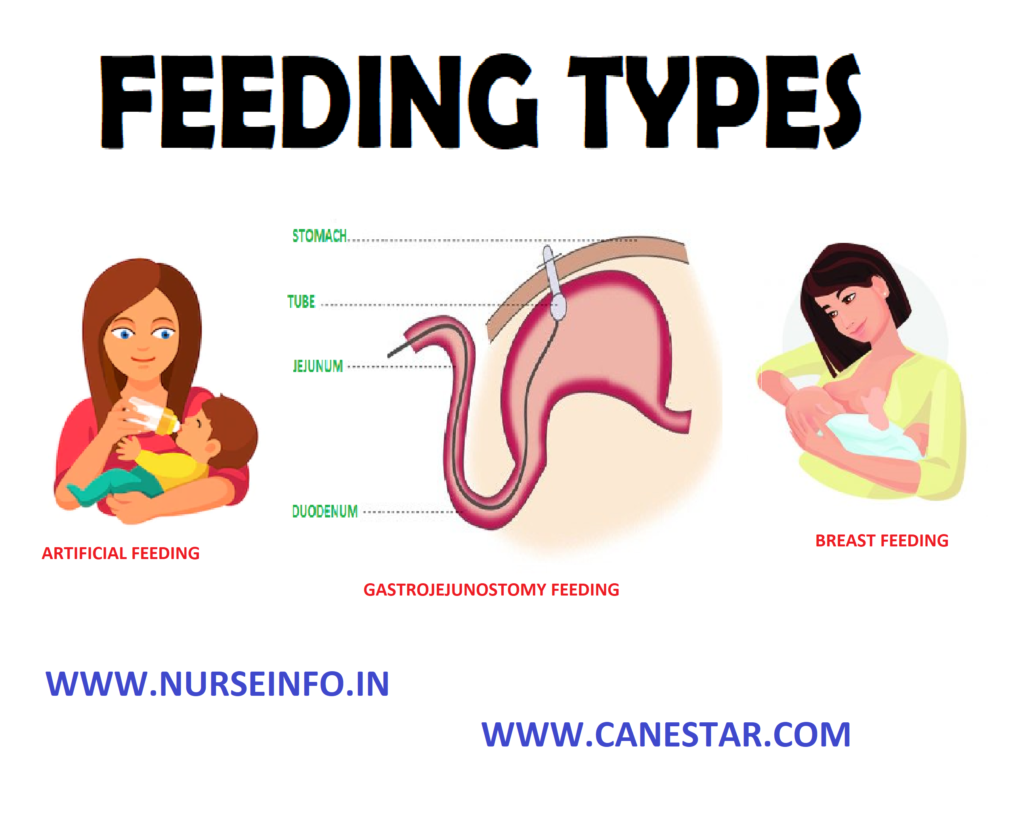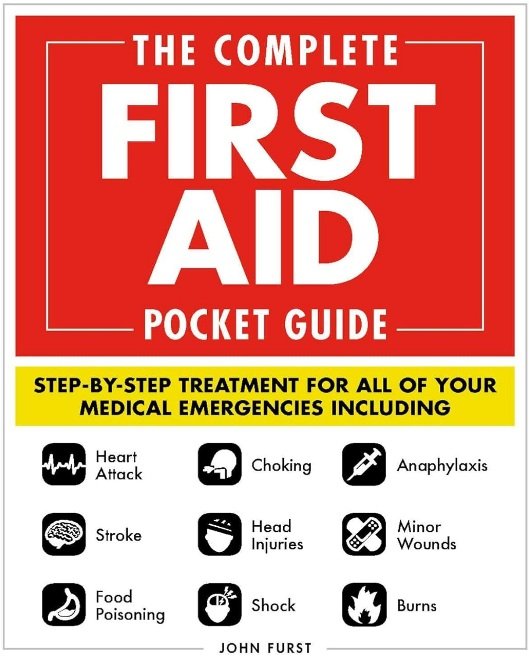NURSING PROCEDURE – DIET FOR PATIENTS (Gastrojejunostomy Feeding, Breastfeeding and Artificial Feeding)

Purpose, General Instructions, Preliminary Assessment, Preparation of Patient and Environment, Equipment, Procedure and After Care
UPDATED 2024

GASTROJEJUNOSTOMY FEEDING
Gastrojejunostomy
feeding is defined as enteral nutrition is a liquid food preparation directly
into the stomach or small intestine via a tube

It is an
ideal method of providing nutrition for the person who is unable to swallow
food and drink normally but has intact gastrointestinal function
It is the
introduction of liquid good through a tube or catheter which the surgeon has
already introduced into the stomach through the abdominal wall
Indications
- Tumors or operations on the upper
gastrointestinal tract - Cancer of the esophagus
- Stricture of the esophagus caused by
poisoning in case of fistula
General Instructions
- It is essential that the area of the
skin around the tube be kept clean and dry - A water proof ointment such as zinc
oxide may be applied around the tube to protect the skin from the irritation of
the hydrochloric acid - Foods given through the gastrostomy
tube are some as those given by nasogastric tube and the same amounts are given
at the same intervals
Methods of Administration
- Intermittent feeding: given four to
six times a day rather the continuously is delivered as a bolus through a
longer lumen tube. Volume for formula usually 250-450 ml is placed in a large
syringe and inserted into the proximal end of the tube - Intermittent gravity drip:
administration delivers a similar volume 250-450 ml of feeding over 20-30 ml a
minute, four to six times a day - Continuous administration: delivers
fluid through a small lumen tube at a constant rate via orogastric and
nasogastric routes. The rate of flow is carefully regulated. The nurse should
calculate the amount of fluid to be infused during an hour and regulates the
infusion pump accordingly
Preliminary Assessment
Check
- The doctors order for specific
instruction - Level of consciousness of the patient
- Self-care ability of the patient
- Mental status to follow instructions
- Articles available in the unit
Operation of
the Patient and Environment
- Explain the sequence of the procedure
- Provide privacy
- Arrange the articles at the bedside
- Place the patient in a comfortable
position - Keep the environment clean and tidy
- Keep ready with feed to be given
Equipment
A clean tray
containing
- A funnel, rubber tubing, glass
connection screw and a clamp - A glass of drinking water
- Required amount of fed, temperature
100 degree F - Sterile lubricant to protect
surrounding area - Sterile dressing and forceps in a
dressing tray - Medicine as per odor
- Kidney tray
- Many tailed binder if required
- Mackintosh and towel
- Stethoscope
- Syringe
Procedure
- Wash hands thoroughly
- Place the mackintosh or towel; clean
the surrounding area of the opening. Cover the wound with sterile piece of gauze - Unscrew the clamp from the
gastrostomy tube and attach the funnel and rubber tubing; keep the tube pinched
to prevent air from setting in - Aspirate the gastric contents by
attaching a syringe - Pour some clean water into the funnel
and lower a little to let our air - Then pour the feed before the funnel
is empty - If any medicines are ordered, these
are given after feed - Give water after giving medicines
- Disconnect the tabbling and funnel
- Clean and apply sterile instrument
around the wound, dress it with sterile dressing and apply the binder
After Care
- Remove the Mackintosh and towel
- Position the patient comfortable
- Secure the tube with plaster
- Replace the articles to utility room
- Hand wash
- Record the procedure in nurse record
sheet
BREASTFEEDING
Breastfeeding
is the best food for the baby. It’s not only gives nourishment but also suffice
the baby’s emotional needs.
Advantages
- It is the best natural food for the
baby - It fully meets the nutritional
requirement of the infant and promotes optimal growth - It protects the baby from the
infections - It satisfies the sucking reflex of
the child - It is always clean and sterile
- It is available at the correct
temperature and requires no preparation - Lactoferrin present in the breast
milk inhibits the growth of bacteria - Gastrointestinal disturbances are
less in breast fed, children, due to presence of lactobacillus fibrous - It creates bonding between the mother
and child - It helps parents to space their
children - It reduces infant mortality rate
- It helps in involution of the uterus
- It gives baby a sense of security
Contraindication for Breastfeeding
Mother
- Breast diseases e.g., mastitis,
breast abscess - Cardiac diseases and active
tuberculosis - Infectious diseases
- Mental illness of mother
- Unconscious mother
Baby
- Babies with cleft lip and cleft
palate - Premature and sick babies who have
poor sucking reflex - Oral thrush
Breastfeeding Methods
General Instructions
- Mother should keep her body clean and
wear clean cloths - Before each feed, clean the breasts
and hands of the mother - Mother should be in comfortable
position during feeding - Hold the nipple between index and
middle finger - Feed the baby on demand; it helps the
baby to gain weight - Feed the baby for minimum 10 minutes
on each breast - Instruct the mother to feed the baby
even when the child is ill - Burping should be done after each
feed to expel the air from the baby’s stomach - When the baby is 4 to 6 months old start
weaning, because, mother’s milk is not sufficient to sustain growth after 6
months of age - If the baby’s napkin is wet, dirty,
change the napkins and cloths before each feeding - Weigh the child every month and
record it - Teach the mother to have adequate rest to avoid tension, fatigue and stress
ARTIFICIAL FEEDING
Artificial
feeding is given to infants instead to the breast milk. Breast milk is often
substituted by cow’s milk. The cow’s milk is substituted by dried milk,
evaporated milk, etc.
Difference
between human’s milk and cow’s milk
Human –
carbohydrate (7%), protein (1.5%) and fat (3.5%)
Cow –
carbohydrate (4%), protein (4%) and fat (4%)

Preparation of formula
The milk
formula should be planned to meet the nutritional requirement of the infant
which is based on his age and weight
Caloric
requirement: 110 calories per kg of baby weight
Fluid
requirement: 165 ml per kg of baby weight
Milk
requirement: 100 to 130 ml per kg of body weight
Number of
feeds in 24 hours: 7 feeds
Time
interval between each feed: 2-3 hours
Preparation
of Milk Formula for a Day
Take 460 ml
of milk, 140 ml of water and add 9 teaspoonful of sugar and boil it and keep it
in the refrigerator, for each feed, take 85 ml of milk, ward it and feed the
baby
Different Ways of Feeding in Infant
- By using the feeding bottle and teat
- By nasal tubes
- By belcroy feeder
- By dropper
- By using spoon
General Instructions
- Plan the formula according to the
nutritional requirement of the baby - The feeding bottle, teat and other
articles used for the feeding should be sterile - The milk feed should be warm
- The mother and the child should be in
a comfortable position - Ensure a slow and steady flow of milk
by making a hold in the teat neither too big nor too small - Change the napkin before the feed, if
it is wet or soiled - The feeds should be given at regular
intervals - The mother should wash her hands
thoroughly before preparing the feed and feeding the child - Offer a small quantity of water at
the end of each feed - Never pinch the baby’s nose to make
him to open his mouth instead press his cheeks
Preliminary Assessment
Check
- The doctors order for any specific
instructions - Plan the formula according to the
nutritional needs of the infant - Time at which the last feed was given
- General condition of the baby
- Baby’s ability for sucking
- Articles available in the unit
Preparation of the Infant and the Environment
- Arrange the articles at the bedside
- Provide privacy
- Change the napkin if it is wet
- Bath the baby in necessary
- Keep the feeding bottle ready
Equipment
A tray
containing
- Mackintosh and towel
- Baby dress and napkin
- Feeding bottle and teat in a sterile
container - Required amount of feed (sterile)
- Sterile water in a bottle
- A piece of clean towel or flannel
- Gown and mask for the nurse
Procedure
- Wash hands thoroughly
- Hold the baby in a position similar
to one used for breastfeeding - Check the temperature of the feed by
dropping few drops on the inner aspect of the wrist joint - Hold the bottle in an angle of 45
degree and bring the teat to the lips and then into the mouth of the baby - Take care to keep the teat filled
with milk throughout the feeding - Break the wind (burping) in between
the feeds - When the feed is finished, give
sterile water to the baby
After Care
- Keep the baby on the shoulders and
pat over his back - Wipe the face
- Remove the towel and lay the baby in
the cradle - Replace the articles in the proper
place after cleaning - Wash hands
- Record the procedure in the nurse’s
record sheet
DIET (NUTRITION) FOR SICK PATIENTS
INSERTION OF SENGSTAKEN – BLAKEMORE

NURSING PROCEDURES LIST CLICK HERE
Discover more from Bibliobazar Digi Books
Subscribe to get the latest posts sent to your email.




![First Aid (Quick Study Health) PDF Free Download [Direct Link]](https://bazarbiblio.com/wp-content/uploads/2024/02/First-Aid-Quick-Study-Health-PDF.jpg)